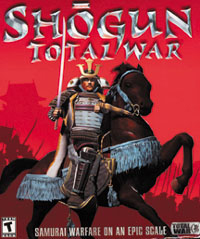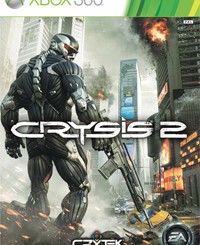 Shogun: Total War
Shogun: Total War
(EA for the PC)
by Eric Johnson
Despite the influence of Japanese society on contemporary entertainment, surprisingly little material produced by this small island nation focuses upon the fascinating warrior culture that dominated its society until just over a century ago. I find it somewhat disconcerting that a society which thrived in isolation for almost a thousand years allows itself to be represented in popular culture by a cute little yellow kitten popping out of a red and white sphere and firing lightning bolts out of its ass. Before Pokemon, overcrowded subways, Hiroshima, stereo equipment, and reasonably-priced cars with insufficient headroom, it was the Samurai that dominated Japanese society. During the mid-sixteenth century, conflicting feudal landholders fought an extended civil war, battling for complete domination of Japan. The man who won this war would be proclaimed Shogun. This was the era of history that Akira Kurosawa depicted in his amazing samurai films and it is in this era that Shogun: Total War takes place.
Shogun may be marketed adjacent to other strategically-based games on the store shelf, but it’s quite a different experience. Best described as a highly-centralized, very complex variation on Risk, Shogun has the look and feel of an exceptionally complicated and challenging board game. You take control of one of the dozen royal houses who dominate the landscape and seek to take supreme control of the country through a combination of diplomatic maneuvering, military force, and technological innovation. At times, you may call upon ninja, geishas, missionaries, shinobi, or diplomats to influence events in neighboring provinces. At other times, you will simply march your armies into adjacent territory and take them over. Strategic maneuvering is all done from the default map, which resembles a map in the throne room a feudal warlord. Wooden figures represent army units, castles, emissaries, and spies whose manipulation can bring unintended consequences. It’s generally in this mode that the game is won or lost, resources are gathered and armies are built.
Combat is another matter. When two armies come into contact with one another and a battle ensues, tactical combat takes place in a fully rendered landscape. When armies clash, they’re commanded by clicking on their representative battle flags and maneuvered into place with a fairly large number of formation options and attack modes. Up to five thousand individual soldiers can clash in these environments, and although the individual men are not rendered in great detail, the movement of vast armies over the landscape has a terrible beauty all its own; Kurosawa fans will appreciate the comparison. In an appropriate tribute to Sun Tzu and the nature of Samurai combat in general, battles do not last long and are generally decided at the outset. There are no trump cards to play and the only real hope for victory is to look for openings in your enemies’ defense or attack plan. Charge the archers with spearmen and you will do well, charge standing spearmen with cavalry and you’re fucked. Tactical mode is made all the more difficult because the enemy AI is so smart, its actions are based strictly upon the philosophy of Sun Tzu. Expect smaller forces to hide in elevated, densely-forested areas, and hold back a small force of reserves for commitment at the precise moment they are most needed. In all, the tactical game is deceptively simple and tremendously difficult. It wouldn’t be enough of a game to stand on its own, but it’s the perfect compliment to the slow, contemplative pacing of the strategic game.
Shogun will not suffer comparison to other titles because it’s unlike most of them. It’s a challenging, contemplative variation on strategic board games like Chess and Risk. The graphics and sound are quite attractive but not revolutionary in any way – they carry tremendous visceral impact and get the job done. Shogun is firmly grounded in the fascinating history of feudal Japan. It comes with an extensive amount of background text for those who may be interested in learning more, and it introduces no fantastic or unrealistic elements to take away from the visceral experience it so compellingly renders. It’s recommended for those patient enough to keep coming back for more after the computer has outsmarted you a dozen times, as well as those interested in feudal Japan or fans of Kurosawa’s films. It depicts an aspect of Japanese culture all too often forgotten in the wide-eyed animated exports we’re bombarded with today.
www.ea.com



